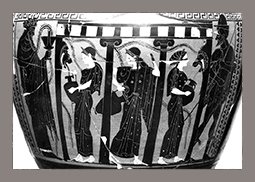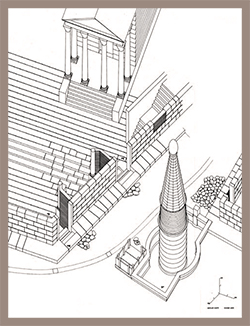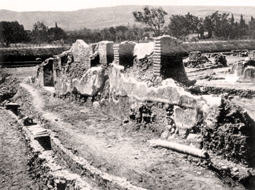Authors: L.M. Caliò, A. Fino, G.M. Gerogiannis
Download article as .pdf: La krene nell’area del teatro di Agrigento: dati preliminari
 This paper reports the preliminary results of the research carried out west of the theater area of Agrigentum, with the aim of understanding and specifying the boundaries of the large public space in which the complex insists. The excavations of this sector, in fact, stand in continuity with those of the theater, constituting almost an appendix. The area, excavated since 2017, has returned over the years an intricate stratigraphy of overlapping structures that in 2022 led to the recognition of a krene in the lowest levels, the making of could be framed as part of the Teron construction activity. The importance of the discovery stands in the fact that at the complex water management system, consisting of galleries, hypogea and fine catchment systems, only a monumental fountain is known until now in the entire extention of the ancient city at the so-called Santuario Rupestre in S. Biagio. The achievements, moreover, are fueling a renewed interest in issues related to the water archaeology and particularly how it was experienced in daily life even in the urban and social organization of ancient cities.
This paper reports the preliminary results of the research carried out west of the theater area of Agrigentum, with the aim of understanding and specifying the boundaries of the large public space in which the complex insists. The excavations of this sector, in fact, stand in continuity with those of the theater, constituting almost an appendix. The area, excavated since 2017, has returned over the years an intricate stratigraphy of overlapping structures that in 2022 led to the recognition of a krene in the lowest levels, the making of could be framed as part of the Teron construction activity. The importance of the discovery stands in the fact that at the complex water management system, consisting of galleries, hypogea and fine catchment systems, only a monumental fountain is known until now in the entire extention of the ancient city at the so-called Santuario Rupestre in S. Biagio. The achievements, moreover, are fueling a renewed interest in issues related to the water archaeology and particularly how it was experienced in daily life even in the urban and social organization of ancient cities.


